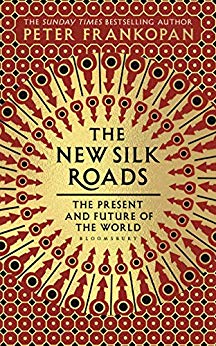The New Silk Roads
Peter Frankopan

The device of telling a modern history of the world in the framework of the Silk Roads could have seemed contrived, but it wasn’t. This is quite a bracing digest of ‘the way things are’ and - as with the earlier book - succeeds in presenting the world you think you knew/know in a convincingly different light.
not one of the ten fastest-growing economies of 2017 is located in the western hemisphere, nor has one been for the last decade.
With a combined population of 4.4 billion, those living along the new Silk Roads between China and the Eastern Mediterranean account for more than 63 per cent of the world’s population, with a collective total of $21tr – or 29 per cent of total global output.
the economist Branko Milanović observed that ‘the great winners’ of the redistribution of global wealth ‘have been the Asian poor and middle classes; the great losers, the lower middle classes of the rich world’.13 Explaining the shift of the world’s centre of gravity – and promising to do something about it – wins votes.
In fact, the UK would be hit particularly badly by a financial crisis in China – far more so than any other country in Europe, because the exposure of the UK’s banks is ‘greater than the US, Euro area, Japan and Korea combined’.
perhaps the biggest problem about Brexit is not the question of whether leaving the European Union is right for the UK; it is whether it is right to do so at a time of such profound geopolitical and economic fragility.
China’s growing program of manned and unmanned launches, which now includes a major new facility being built in Patagonia in southern Argentina that will help with expeditions to the far side of the moon.
The triumph of liberal democracy is on hold, if not over.
The rise of this new world is taking place before us, driven by shifts in power that are so profound that it is hard to see how they can be stopped, slowed down or held back, except by the forces of conflict, disease and climate change that have played such important roles in the past in shaping world history and redirecting and reshaping the present and the future.